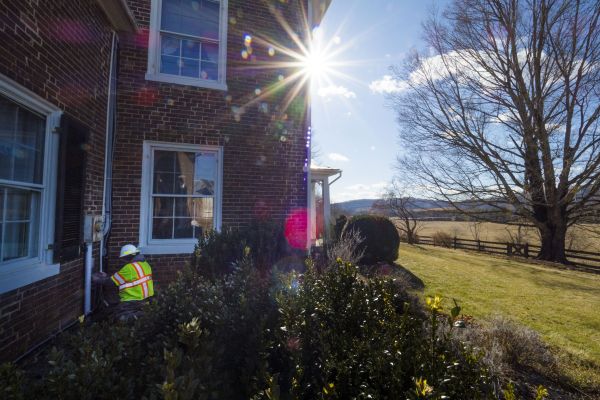Administration Again Proposes Eliminating Many Housing Programs
The Trump Administration’s budget proposal for fiscal year 2020, much like its FY19 and FY18 budgets, would eliminate most of USDA’s rural housing programs, along with CDBG, HOME, and SHOP. It would require tenants in both USDA and HUD properties to pay more for their homes. It would also cut USDA Rural Development staff below their already reduced levels.
Register Now for HAC’s webinar on the Administration’s FY 2020 Budget.
USDA
Like the Administration’s FY19 budget, this year’s proposal would zero out funding for all rural housing programs except Section 502 guarantees, Section 538 guarantees for rental housing production, and renewals of existing Section 521 Rental Assistance and Section 542 vouchers. It would require tenants in USDA-assisted rental housing to pay at least $50 per month unless they apply for and receive a hardship exemption from USDA. It would also rescind $40 million from the Section 521 Rental Assistance program; that amount represents funding carried over from one year to the next to avoid potential shortfalls in funding availability to renew RA contracts at the beginning of the fiscal year.
Voucher funding would be combined with RA in a single account. USDA’s budget summary shows a $1.407 billion line item for Rental Assistance, but that amount includes $32 million for vouchers and does not account for the $40 million proposed rescission. USDA says this is enough to renew current contracts.
The budget calls for 3,776 Rural Development employees, saying this is 613 staff years below the 2019 estimate.
USDA Rural Development Appropriations[tdborder][/tdborder]
| USDA Rural Dev. Prog. (dollars in millions) |
FY 20 Admin. Budget | |||
|
502 Single Fam. Direct |
$1,100 |
0 |
$1,000 |
0 0 |
|
502 Single Family Guar. |
24,000 |
24,000 |
24,000 | 24,000 |
|
504 VLI Repair Loans |
28 |
0 |
28 | 0 |
|
504 VLI Repair Grants |
30 |
0 |
30 | 0 |
|
515 Rental Hsg. Direct Lns. |
40 |
0 |
40 | 0 |
|
514 Farm Labor Hsg. Lns. |
23 |
0 |
27.5 | 0 |
|
516 Farm Labor Hsg. Grts. |
8.4 |
0 |
10 | 0 |
|
521 Rental Assistance |
1,345 |
1,331.4 |
1,331.4 | 1,335** |
|
523 Self-Help TA |
30 |
0 |
30 | 0 |
|
533 Hsg. Prsrv. Grants |
10 |
0 |
15 | 0 |
|
538 Rental Hsg. Guar. |
230 |
250 |
230 | 250 |
|
Rental Prsrv. Demo. (MPR) |
22 |
0 |
24.5 | 0 |
|
542 Rural Hsg. Vouchers |
25 |
20 |
27 | 32** |
|
Rural Cmnty. Dev’t Init. |
4 |
0 |
6 | *** |
|
Rental Prsrv. TA |
1 |
0 |
1 | 0 |
* For the self-help setaside in Section 502 direct, the figures in the table represent budget authority, not program levels.
** The budget would move vouchers into the Rental Assistance account.
*** The budget documents available on March 11 do not mention RCDI. Details scheduled to be released on March 18 should confirm whether the Administration proposes any funding for this capacity building program.
HUD
The budget would decrease HUD’s funding by 16.4 percent. It would eliminate CDBG, HOME, SHOP, and support for public housing’s capital needs.
It would impose work requirements on HUD-assisted tenants and would include the Administration’s April 2018 proposed rent increases. It would moderately increase HUD’s staffing and would finance improvements to outdated technology. HUD’s summary of the request says rental assistance would be maintained for all currently assisted tenants.
HUD Appropriations [tdborder][/tdborder]
| HUD Program (dollars in millions) |
||||
|
CDBG |
$3,300 |
0 |
$3,300 | 0 |
|
HOME |
1,362 |
0 |
1,250 | 0 |
|
Self-Help Homeownshp. (SHOP) |
10 |
0 |
10 | 0 |
|
Veterans Home Rehab |
4 |
0 |
4 | 0 |
|
Tenant-Based Rental Asstnce. |
22,015 |
20,550 |
22,598 40 4 |
22,244 ? ? |
|
Project-Based Rental Asstnce. |
11,515 |
10,952 |
11,747 | 12,021 |
|
Public Hsg. Capital Fund |
2,750 |
0 |
2,775 | 0 |
|
Public Hsg. Operating Fund |
4,550 |
3,279 |
4,653 | 2,863 |
|
Choice Neighbrhd. Initiative |
150 |
0 |
150 | 0 |
|
Native Amer. Hsg. Block Grt. |
655 |
600 |
655 | 600 |
|
Homeless Assistance Grants |
2,513 |
2,383 |
2,636 | 2,599 |
|
Hsg. Opps. for Persons w/ AIDS |
375 |
330 |
393 | 330 |
|
202 Hsg. for Elderly |
678 |
563 |
678 | 644 |
|
811 Hsg. for Disabled |
230 |
132 |
184 | 157 |
|
Fair Housing |
65.3 |
62.3 |
65.3 | 62 |
|
Healthy Homes & Lead Haz. Cntl. |
230 |
145 |
279 | 290 |
|
Housing Counseling |
55 |
45 |
50 | 45 |


 by Moises Loza, HAC’s Executive Director
by Moises Loza, HAC’s Executive Director
